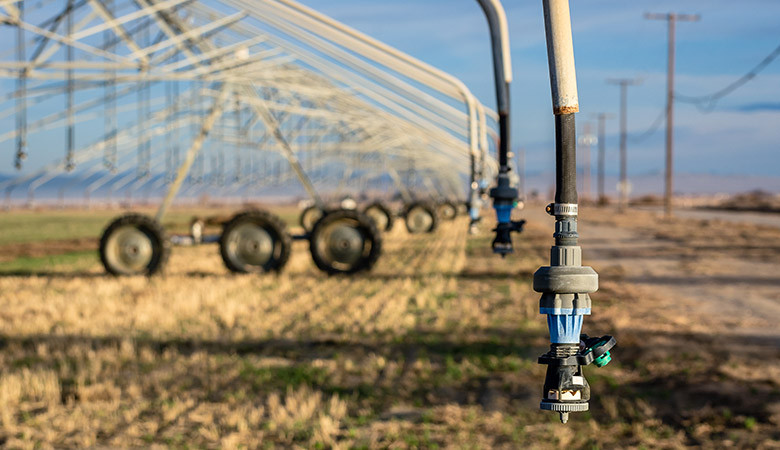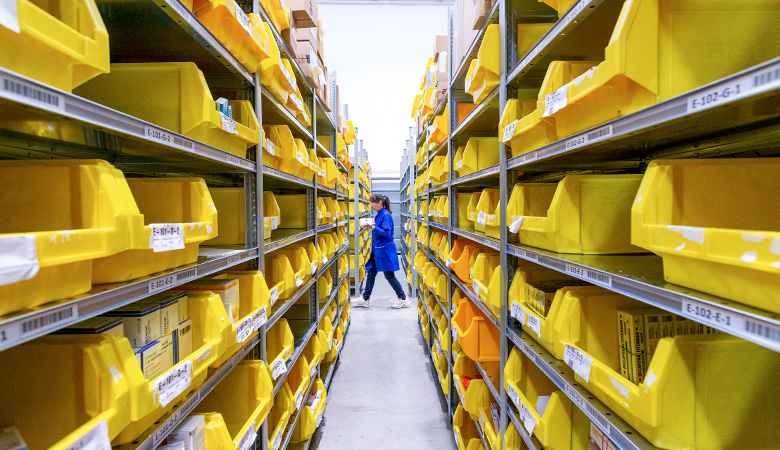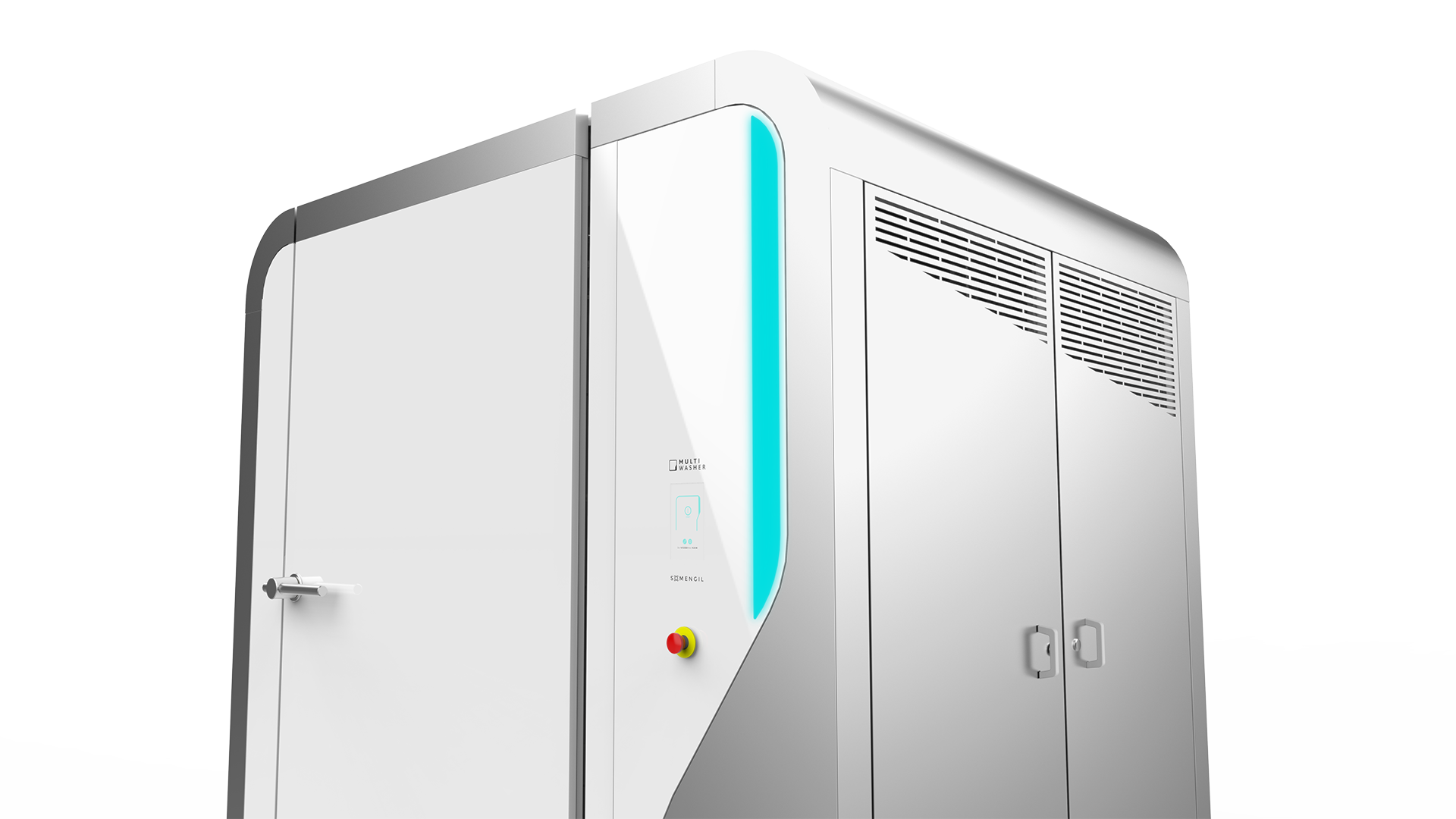Lavagem Industrial / Artigos
Industrial kitchens: 13 optimization tips
These are 13 best practices to optimize an industrial kitchen and create a more functional, safe, organized and sustainable work environment.

 13 minutos de leitura
13 minutos de leitura
2022-08-16 07:00:00
The kitchen is the heartbeat of every food company, constantly evolving to respond to new needs and trends. Keeping up requires a deep commitment to continuous improvement so that productivity, efficiency and quality of service are not compromised.
These are 13 best practices to optimize an industrial kitchen and create a more functional, safe, organized and sustainable work environment.
1. Smart environment
Data is one of the biggest optimization opportunities for industrial kitchens. Internet-of-Things (IoT) has brought new devices, sensors, automation software and communication equipment that translate into significant improvements in performance and sustainability.
Practical examples are increasingly frequent and impactful: just see how Somengil industrial washing machines adapt the main washing variables (temperature, pressure and amount of detergent) to the type of product to be washed automatically at each washing cycle. Or how they allow you to save up to 20 washing programs on an intuitive touch screen, so the operator can quickly access what you’re looking for, rather than having to manually configure the washing parameters.
2. New drying methods
An optimized industrial kitchen is also a safe and productive work environment for staff, customers and the general public. Industrial drying methods avoid potential risks, such as the spread of food born diseases. There are several options, from convective drying, with hot air, to contact drying with a hot surface or to natural drying, to time.
In some specific cases, it may be necessary to resort to infrared drying, which evaporates water and detergents at high temperature, or freezing drying, which dehydrates the medium of freezing the material, followed by a reduction in pressure and subsequent addition of heat. Finally, dielectric drying uses radiation or radio frequencies to transfer heat into materials to dry them, such as in a microwave.
The choice of drying method depends on each case. But in most industrial kitchens, convective drying, with forced hot air, is the most secure, effective and affordable option. This is the method we chose for MultiWasher, our state-of-the-art industrial washing machine. From food, dishes, tools and boxes to trays, any utensil can be washed and dried in the machine efficiently.
3. Ergonomic equipment
Musculoskeletal injuries affect 3 out of 5 workers, more than all other occupational diseases combined. The answer to this professional scourge is ergonomics, the science of adapting the task to the person. This level of care is essential for workers and is a requirement for all organizations concerned with building a more optimized and productive workspace .
To improve the ergonomics of operations it is necessary to work on several fronts. One of the first steps is to eliminate repetitive tasks, with a cycle time of less than 30 seconds. Activities that require unnatural postures, such as having to lower, rotate or climb, are especially dangerous. Finally, it is important to avoid lifting loads above 5 kg and minimize prolonged exposure to vibration.
MultiWasher is an industrial washing machine for organizations concerned with the ergonomics of their processes. With this machine, it is possible to ensure the washing of any utensil (such as pans, trays, oven shapes, tools or exhaust filters) with an optimized and safe work process. For example, operators do not have to load and unload each utensil individually, as is the case on a traditional machine. This process is done in custom carts or trays, which are washed within the machine, to minimize repetitive travel with weights.
4. Eco-friendly materials
According to the U.S. Environmental Protection Agency (EPA), disposable packaging accounts for nearly half of all municipal solid waste. About 79% of all plastic produced to date continues to exist in oceans, rivers, lakes and landfills.
Paper, cardboard, bamboo, glass, stainless steel, silicone and bagasse are some materials that are contributing to a less disposable world. Multiwasher can wash all these sustainable materials efficiently.
5. Ecological detergents
An industrial detergent is an essential product for health, safety and hygiene in all areas of human activity, as is the case of industrial kitchens. But harmful chemical agents threaten human health and the environment, and require large amounts of water for rinsing, prompting many to question the use of this product in an industrial context.
As a result, some manager are turning to ecological detergents – without chlorine, peracetic acid, phosphates and coconut, sugar and palm oils – to optimize industrial kitchens, avoid waste and toxic products. These products also do not use animal testing and use only recyclable packaging.
At Somengil, we recommend the use of biodegradable detergents, without toxic agents harmful to the operator and the environment. The MultiWasher requires 70% less detergent than the average equipment, while ensuring a completely perfect washing of any utensil.
6. Water saving in industrial kitchens
Saving water is a cross-cutting mission for all companies and a challenge of particular importance in the food sector. Among the many processes that occur in an industrial food kitchen, washing – of dishes, boxes, utensils and containers – is what consumes the most water, accounting for approximately two thirds of total consumption.
The use of water is so significant during washing that, excluding agriculture, no other process spends so much water on the food industry. A commercial washing machine, with proper installation and maintenance, consumes about 18 liters of water per shelf on average.MultiWasher – developed by Portuguese engineers – is optimized to save natural resources, making it possible to automatically reuse the washing water between cycles and completemultiple washes with the same water, without human intervention. The MultiWasher thus saves 2/3 of water when compared to other industrial washing machines.
7. Reinforced hygiene in industrial kitchens
Every year, 1 in 10 people around the world get sick from contaminated food. There are nearly 420,000 fatalities from more than 200 foodborne diseases. These diseases are caused by the consumption of food or beverages contaminated by different bacteria, viruses, parasites, toxins or chemicals harmful to health. Since the beginning of the millennium, the number of outbreaks of foodborne diseases has been increasing at an alarming rate.
Industrial washing equipment, which washes cooking utensils at high temperatures with little detergent, are crucial to ensure proper food handling practices and improve the safety and protection of employees and consumers. MultiWasher is the benchmark for reconciling productivity, washing quality and food safety.
8. Predictive maintenance
Maintenance is on its way to a new era. Instead of reacting when a component does not work, maintenance managers can act before a failure forces to stop the machine. Predictive maintenance uses equipment data to predict and prevent failures, increase lifetime, and improve efficiency. Based on the collected data and predictive algorithms, it allows you to predict problems that would otherwise cause long stops.
Predictive maintenance aims to optimize industrial kitchens by increasing team productivity and machine efficiency, while reducing maintenance costs and improving customer service. In an industrial kitchen where a stop has a direct impact on customer service, predictive maintenance can mean increased productivity and more sales.
9. Carefully select indispensable equipment
One of the first steps to optimize industrial kitchens is to choose equipment that is actually needed. There are hundreds of machines and utensils on the market prepared to facilitate the daily life of a professional kitchen, and you can even try to acquire several.
However, first evaluate the specific elements for your kitchen and productive layout, and acquire only the indispensable ones. In this way, you will avoid taking up space with equipment that you will not use later, or that would be unnecessary.
10. Set an optimized layout
Upon purchasing the necessary equipment, it is vital to evaluate which will be used every day and those whose use will be more sporadic.
Devise a layout that allows for quick and easy access to the utensils that are used most frequently so that they are permanently in sight. The rest can be saved in more reserved locations, thus optimizing the space for faster work.
11. Pick the correct equipment position
One of the major objectives to be considered when optimizing industrial kitchens is to improve the workplace and consequently improve production flow.
Think about how you can remove blocks and facilitate movement and access to the most used equipment. It is important that you arrange the machines so that they do not impede passage. Poorly positioned equipment or uneven floors pose a significant danger as they can lead to falls or burns. Free passages make the work environment safer and more efficient.
In addition, the layout should simplify the processes to be carried out in industrial kitchens, either in the preparation and confection of dishes, or in the sanitary practices provided for by the legislation, or even in the organization of stocks.
12. Create clearly defined workstations
Workstations contribute to the optimization of industrial kitchens. Defining the physical areas, equipment and personnel that work better together is a vital step for improvement and should consider the needs of each type of preparation.
This will reduce the need for employees to move during tasks and thus achieve greater efficiency.
13. Implement 5S methodology
The 5S methodology increases productivity, quality and employee satisfaction. It is a Japanese concept of workplace organization comprising 5 simple steps, all starting with the letter “S”. The first step is Sorting, which means making a triage of what is truly necessary in the workplace. The second is Set in Order, which means defining a storage space according to the frequency of usage. Then, Shine refers to cleaning and restoring working conditions of each equipment. Fourth step is Standardization, or creating working standards that enshrine the correct processes. Finally, Sustain is about instilling discipline in the work team to follow the new standards. It is a framework to create a more productive, ergonomic and safe space, with the best possible use of resources.
MultiWasher, the technology for optimized industrial kitchens
The MultiWasher is a next generation industrial washing machine. It makes daily tasks easier and optimizes the production processes of industrial kitchens. It is ergonomic and easy to use, washing and sanitizing in an irreprehensible way all kitchenutensils, from pots, dishes, trays, carts and more. Schedule a webinar without obligation to prove the difference for yourself, or get in touch with our team.
Também pode gostar

Lavagem Industrial / ArtigosArtigos
Saving water: 5 tips to apply in your operations
Despite repeated warnings, water consumption continues to grow at an unstoppable rate. Even on the face of increasing prices, tariffs and taxes,...
Postado em 2021-06-30

Lavagem Industrial / ArtigosArtigos
Trolley washer: how to choose the best one for your business
Save time, water and energy with the right trolley washer for your business. This is what to keep in mind.
Postado em 2024-10-17























 Português
Português English (UK)
English (UK) English (USA)
English (USA) Français
Français Español
Español Deutsch
Deutsch